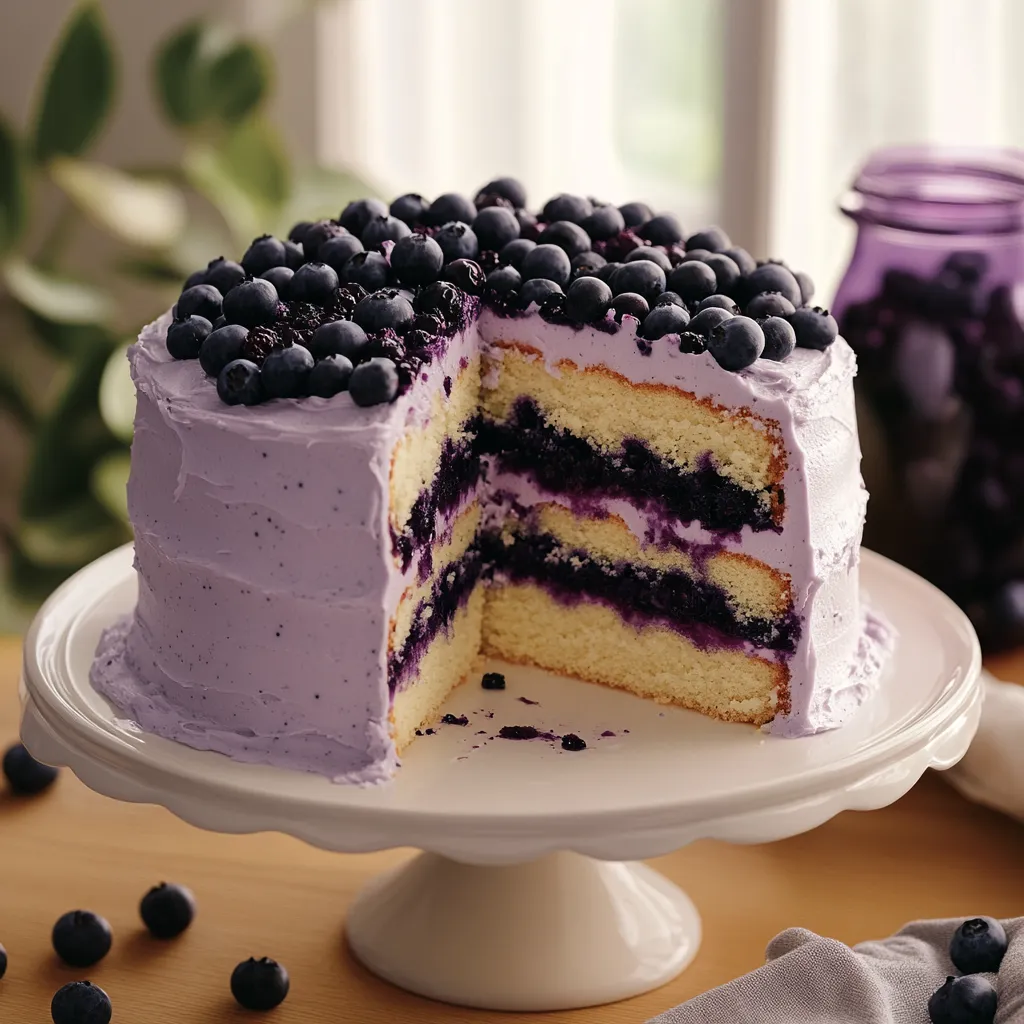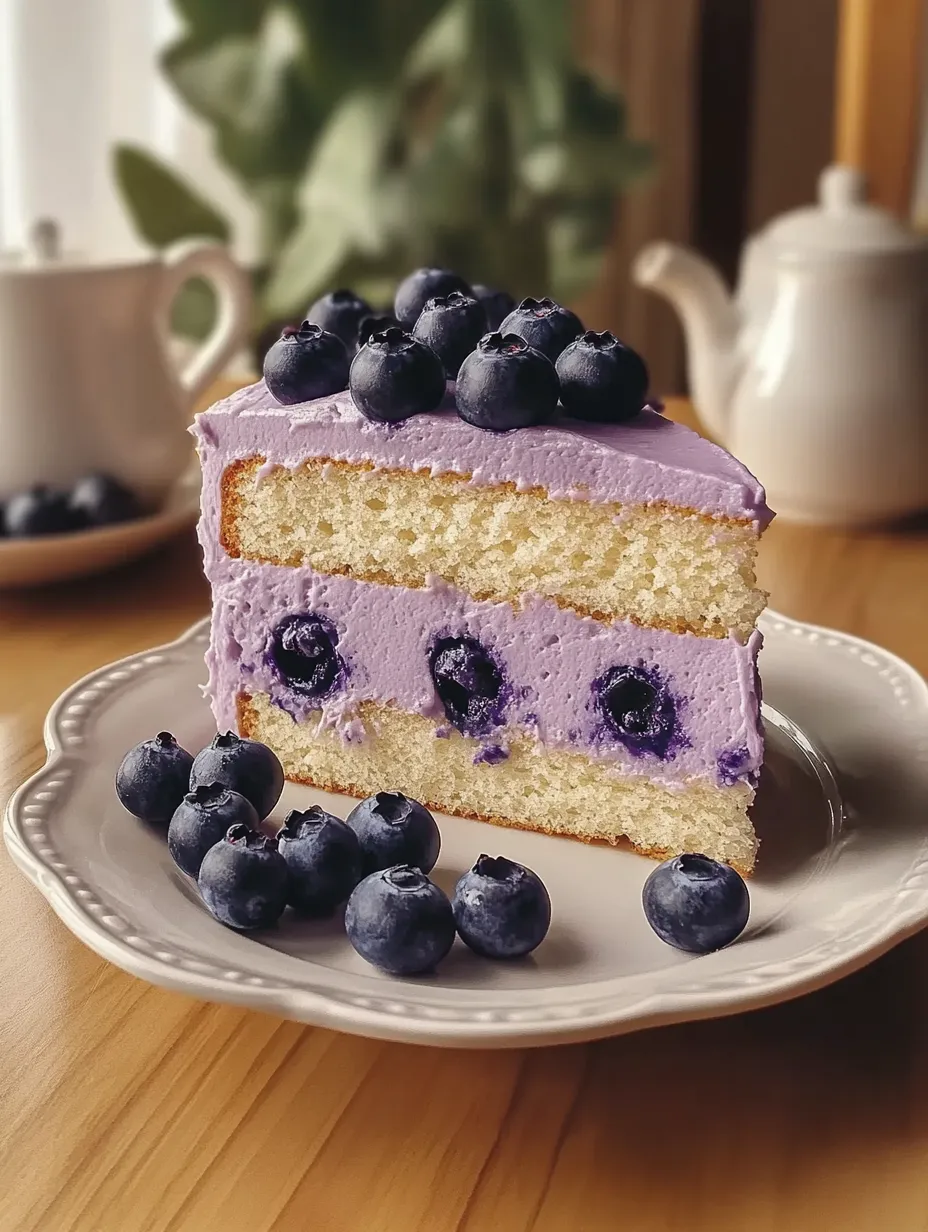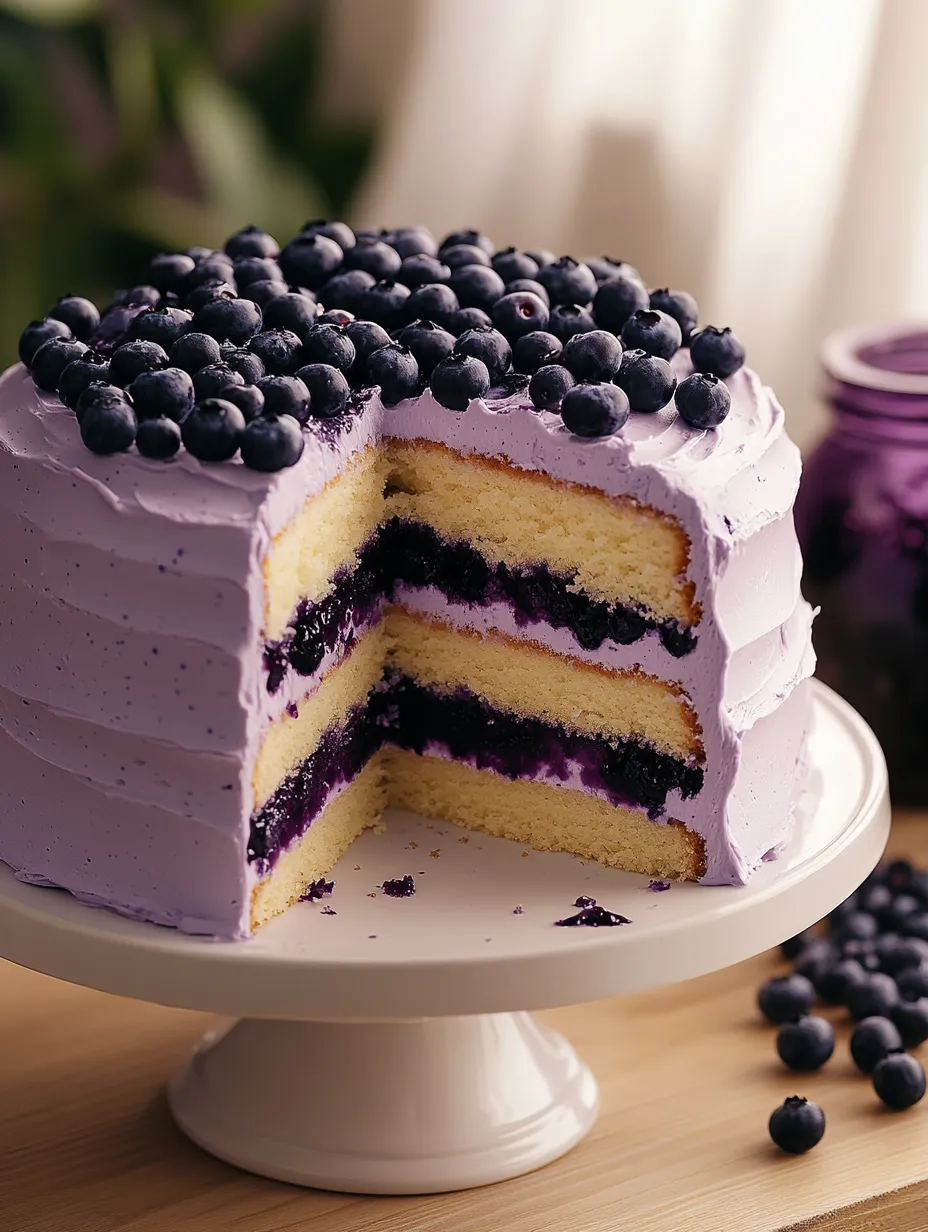 Pin it
Pin it
Blueberry chiffon cake delivers an ethereal eating experience with its cloud-like texture punctuated by bursts of sweet-tart berries. Unlike dense, butter-based cakes, this lighter-than-air creation uses whipped egg whites to create a tender crumb that literally melts on your tongue. The addition of fresh blueberries transforms the classic chiffon into something special—each slice revealing jewel-like berries suspended throughout the cake's airy structure. Perfect for spring and summer gatherings or anytime you crave something sweet yet refreshingly light.
I discovered the magic of chiffon cakes during a particularly hot summer when traditional butter-based cakes felt too heavy. After experimenting with various fruits, blueberries emerged as the clear winner—their natural sweetness and color creating perfect harmony with the delicate cake. What truly won me over was watching my grandmother, who normally declines dessert, ask for a second slice. Now this cake appears at nearly every family gathering, where it disappears faster than any other dessert.
Essential Ingredients
- Cake Flour: Lower protein content creates a delicate texture
- Fresh Eggs: Whites for structure, yolks for richness
- Vegetable Oil: Maintains moisture better than butter
- Fresh Blueberries: Superior flavor and texture to frozen
- Cream of Tartar: Stabilizes egg whites for maximum volume
 Pin it
Pin it
Crafting the Chiffon Cake
- Thoughtful Preparation:
- Separate cold eggs, bring whites to room temperature. Preheat oven to 325°F. Use ungreased 10-inch tube pan.
- Foundation Mixing:
- Sift dry ingredients. Whisk yolks with oil, milk, and vanilla. Combine wet and dry mixtures gently.
- Meringue Magic:
- Beat egg whites with cream of tartar. Gradually add sugar until stiff peaks form.
- Gentle Folding:
- Fold meringue into batter in stages. Toss blueberries with flour before incorporating.
- Proper Baking:
- Bake 50-55 minutes. Invert pan immediately after baking. Cool completely before removing.
My great-aunt Margaret, a picky baker, tasted this cake and asked sharply, 'Who made this?' When I raised my hand, she nodded: 'You’ve mastered the fold.' From a 60-year chiffon veteran, this was high praise—proof that technique transforms simple ingredients.
Serving Suggestions
Serve with tea/coffee for afternoon tea. Dress up with macerated berries and whipped cream for dinners. Pair with lemon curd or honey for brunch. Layer slices into trifles for summer parties.
Creative Variations
- Berry Swap: Use raspberries or blackberries
- Citrus Zest: Add lemon/orange for brightness
- Seasonal Twist: Replace berries with cinnamon apples
- Gluten-Free: Use measure-for-measure GF flour
 Pin it
Pin it
Storage Strategy
Store room temperature up to 2 days. Refrigerate 5 days (bring to room temp before serving). Freeze undecorated cake up to 3 months. Thaw overnight in fridge.
This cake embodies the magic of simplicity—flour, eggs, and sugar transformed into airy delight. The meditative process of folding meringue reminds us that careful technique and quality ingredients create extraordinary results from humble beginnings.
Frequently Asked Questions
- → Why is it important not to grease the tube pan for a chiffon cake?
- Unlike most cake recipes that call for greasing the pan, chiffon cakes require an ungreased tube pan for proper rising and structure. The batter needs to cling to the sides of the pan as it bakes, which allows it to climb higher and maintain its volume. When a pan is greased, the batter slides down the sides instead of gripping them, resulting in a shorter, denser cake. Additionally, cooling the cake upside down (which is essential for chiffon cakes) would be impossible with a greased pan, as the cake would simply fall out. The tube pan's central column and straight sides are specifically designed for this technique, giving the delicate cake the support it needs during baking and cooling.
- → Can I substitute all-purpose flour for the cake flour in this recipe?
- While you can substitute all-purpose flour, it will change the texture of your chiffon cake. Cake flour has a lower protein content (about 7-9%) compared to all-purpose flour (10-12%), which results in less gluten formation and creates the tender, delicate crumb that's characteristic of a great chiffon cake. If you must use all-purpose flour, you can approximate cake flour by measuring out 1¾ cups all-purpose flour, removing 3½ tablespoons, and replacing it with 3½ tablespoons of cornstarch. Whisk or sift them together thoroughly before using. This reduces the protein content and lightens the flour. However, for the best results, real cake flour is recommended for achieving that signature airy chiffon texture.
- → Why do I need to cool the cake upside down?
- Cooling a chiffon cake upside down is essential because of its unique structure. The cake gets its height from beaten egg whites, creating a network of tiny air bubbles throughout the batter. When freshly baked, this structure is still fragile and warm. If cooled right-side up, gravity would cause the cake to compress and collapse under its own weight, resulting in a dense, shorter cake. Inverting the pan immediately after baking allows the cake to use gravity to its advantage – stretching slightly as it cools and setting the structure in its fully expanded form. This technique is what gives chiffon cakes their signature height and airy texture. It's not just a helpful tip but an absolute necessity for proper chiffon cake texture.
- → Can I use frozen blueberries instead of fresh ones?
- Yes, you can use frozen blueberries, but with a few adjustments. Frozen berries release more moisture than fresh, which can affect the cake's texture. For best results: 1) Do not thaw the berries before using; 2) Increase the flour coating to 2 teaspoons when tossing the frozen berries to absorb extra moisture; 3) Gently fold them in while still frozen to prevent color bleeding throughout the batter; 4) You may need to increase the baking time by 3-5 minutes. The cake may not rise quite as high with frozen berries due to the additional moisture, and you'll likely notice more color bleeding into the batter, creating beautiful purple streaks. For a special occasion where appearance is important, fresh blueberries remain the better option.
- → What's the best way to separate eggs for this recipe?
- For perfect egg separation, start with cold eggs from the refrigerator – they separate more easily than room temperature eggs because the yolks are firmer. Use three bowls: one for whites, one for yolks, and a small bowl for separating one egg at a time. Crack each egg gently on a flat surface (not the edge of a bowl, which can push shell fragments into the egg). Open the egg over the small bowl, transferring the yolk back and forth between shell halves while letting the white drop below. Once successfully separated, transfer the white to your whites bowl and the yolk to the yolks bowl. This method prevents contaminating all your whites if a yolk breaks. Even a tiny bit of yolk in the whites can prevent them from whipping properly. After separating, allow the whites to come to room temperature for about 30 minutes for maximum volume when beating.
- → How do I know when the egg whites are whipped to stiff peaks?
- Achieving proper stiff peaks for egg whites is crucial for a successful chiffon cake. Here's how to recognize them: When you lift the beater out of the mixture, the egg whites should form peaks that stand straight up without folding over at the tips. They should feel firm and glossy, not dry or grainy. The mixture should also cling to the bowl when tilted. A good test is to turn the bowl upside down (carefully!) – properly whipped whites won't fall out. To reach this stage successfully, start with room temperature egg whites (they whip better), use a completely clean, dry bowl (any fat residue will prevent proper whipping), add the cream of tartar early (it stabilizes the whites), and add sugar gradually after the whites become foamy. If you accidentally overbeat and the whites look curdled or grainy, they can't be rescued and you'll need to start over.
